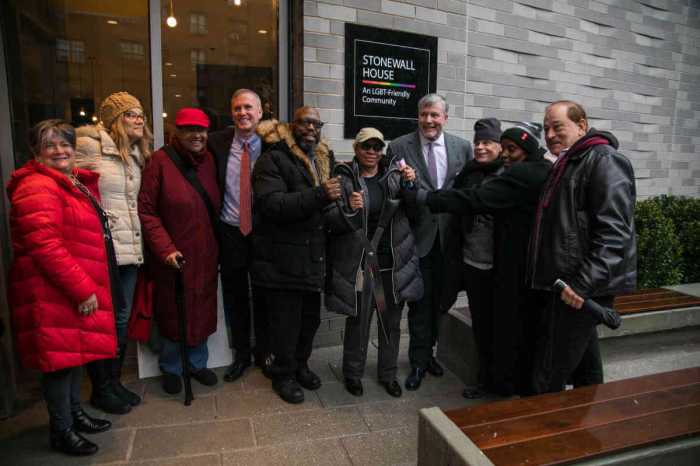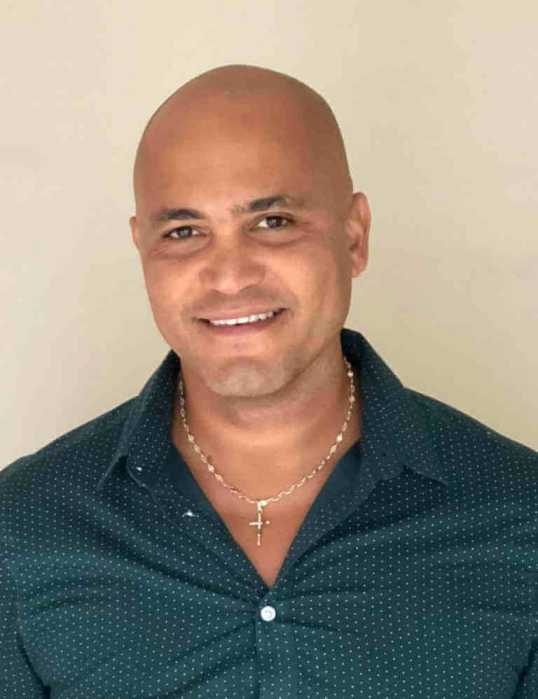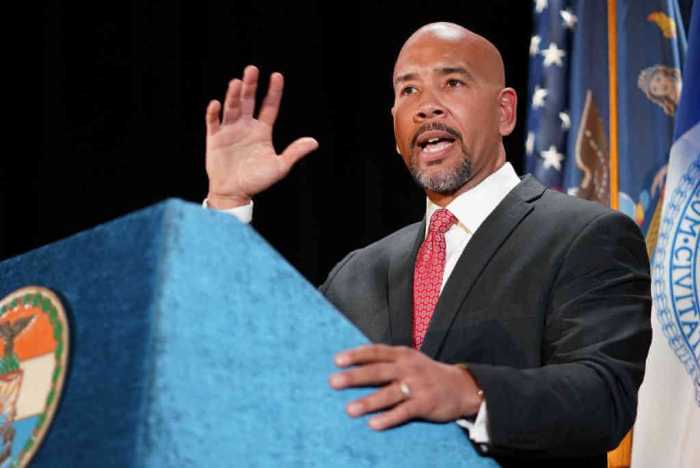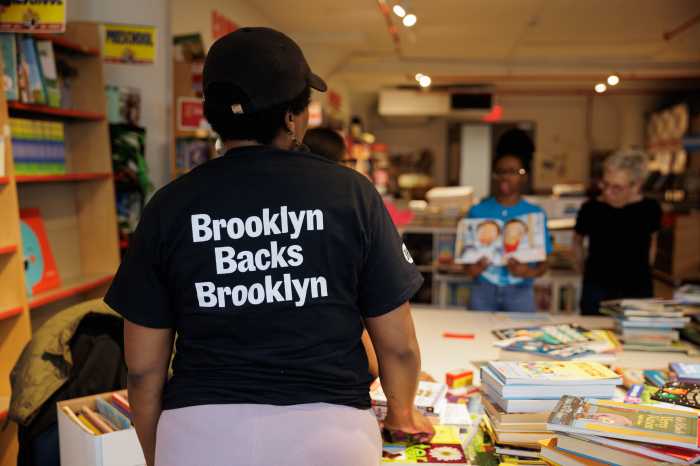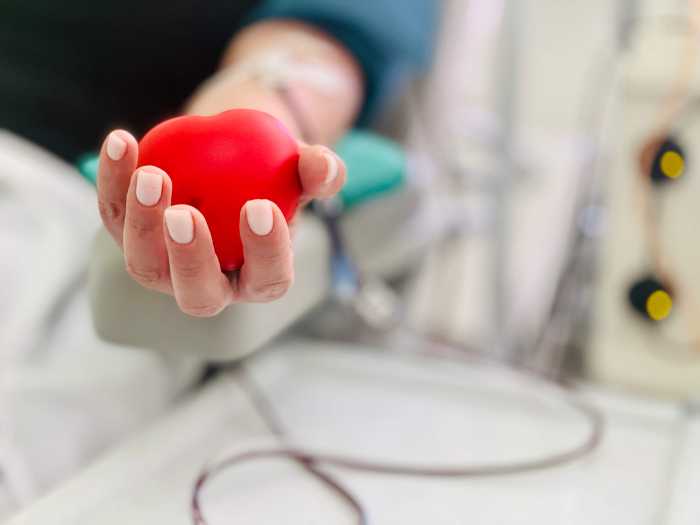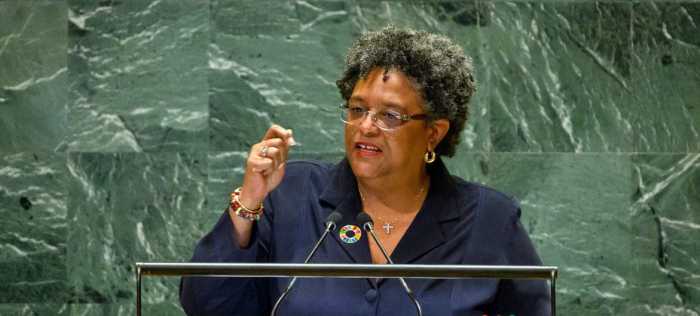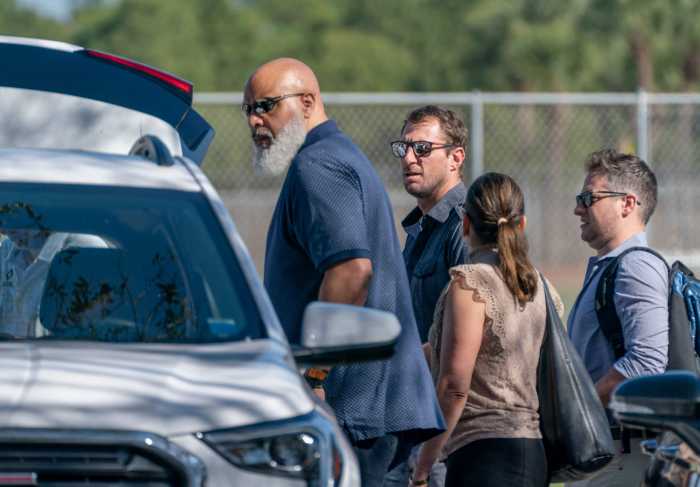Pat Slone and Barbara Police have been together for 40 years. | DUSICA SUE MALESEVIC
BY DUSICA SUE MALESEVIC | Barbara Police and Pat Slone have been together for 40 years and have a problem that many couples can relate to — temperature wars.
Police is always cold, explained Slone, who said she herself is always hot. This can play itself out in windows being opened and just as quickly being closed, she said.
But Police, 66, and Slone, 72, can agree on many things — their love for “Law & Order: Special Victims Unit,” for instance.
For LGBT seniors facing physical, cognitive limitations, a SAGE daily program offers structure and engagement
“We watch it for Mariska Hargitay,” said Police, referring to the actress who plays Olivia Benson. The couple named their dog Munchy after John Munch, a character from the show.
Also top of their list is the new day program that is part of SAGE, Services and Advocacy for GLBT Elders, an organization that has been addressing older adult issues since 1978.
A mandala painting project is one of the activities offered by the SAGEDay program. | COURTESY: SAGE
“We like the program very much,” said Police. “We have different things that we do each day — discussion, trivia, painting, dance, [and] exercise. We have a lot of things that we do. We enjoy it.”
SAGEDay was launched last November in partnership with the Bronx’s Hebrew Home at Riverdale. It is a social day program for LGBT elders who may have one or more limitations —cognitive or mobility issues, for example.
Door-to-door transportation is provided, explained Scott Randall, outreach manager for the program, as he gave a tour of the facilities, which include a library, a lounge, and computer access at the SAGE Center, which opened on the sixth and 15th floors at 305 Seventh Avenue, between 27th and 28th Streets, in 2012.
Participants are provided with a light breakfast, a full lunch, and a light snack, said Randall. The program, which runs from Monday through Friday, 9 a.m. to 3 p.m., offers support and structure, he said.
There is an admission process, Doreen Bermudez, program manager for SAGEDay, explained in a phone interview. Each person is assessed and an individualized care plan is created, she said.
Activities are tailored for the participants, many of whom have memory loss. There are art workshops, storytelling sessions, games such as dominoes, Trivial Pursuit, and chess, and karaoke, said Randall. Attendees also go on outings, most recently to the Frida Kahlo exhibit at the New York Botanical Garden in the Bronx.
The social program aims “to enhance and maintain the quality of life” for participants, Bermudez explained.
“We are able to provide an environment that is safe and inclusive to LGBT [elders] and also addresses those unique needs,” she said.
Older LGBT adults face singular issues — access to healthcare and housing, inequality under the law, and isolation, according to Bermudez.
“We are trying to break isolation, and we are also building community with the older adults that are in the program that might not necessarily have a network of support,” she said, noting that some are estranged from their families.
Affordable housing and housing discrimination are also problems older LGBT adults face, said Cathy Renna, managing partner at TargetCue, a firm that provides public relations and marketing for LGBT and HIV/ AIDS organizations.
“They will find themselves in situations where, as they age, finding housing that adequately addresses their needs is difficult, and often LGBT elders experience discrimination in situations like nursing homes and assisted care facilities,” Renna, an LGBT activist for 25 years, said in a phone interview.
“There are many examples of couples who’ve been split apart or individuals who kind of have to get back in the closet because there’s a homophobic environment,” she added.
SAGE is at the forefront of giving LGBT aging issues both a local and national platform, said Bermudez.
Renna said that there has been a sea change in activism, advocacy, and attitudes around aging issues within the community and outside of it.
“Within our own community — the LGBT community needed to deal with its own ageism,” she said. “If you look at LGBT media and the LGBT community in general in terms of visibility, you rarely saw older LGBT people. SAGE has been instrumental in increasing the visibility of LGBT Americans within our own community as well as the larger community.”
SAGE has centers throughout the city and 27 affiliates in 20 states and the District of Columbia.
Outings are part of the SAGEDay offerings. | COURTESY: SAGE
The SAGEDay program is currently funded by a grant from the New York State Department of Health and has the capacity for 25 people, said Randall. As of now, around 10 people regularly attend, he said.
At the end of September, funding will end and participants will be covered if they have Medicaid or are eligible for Medicaid. If not, the program costs $65 a day and $35 a day for transportation, if needed, said Randall.
Residents of VISIONS at Selis Manor, a senior housing facility at 135 West 23rd Street, Police and Slone don’t have far to travel to access the SAGEDay program. Police grew up in the Village and there was a long time when she was no big fan of Chelsea — she remembers being forbidden as a child to travel above 14th Street. Slone was raised near Yankee Stadium in the Bronx and can remember its lights flooding her windows at night.
The couple have been involved with SAGE long enough to remember when it was just a handful of people gathering at the LGBT Community Center on West 13th Street, where the organization first laid down roots.
The two women met in the lunchroom on their jobs.
“I was talking to a friend and I banged my tray into hers,” explained Slone, “and she turned around and I said, ‘Hello there’ and she said, ‘Well, hello there.’”
All these years later, that lunchroom mishap must seem like a very happy collision.




